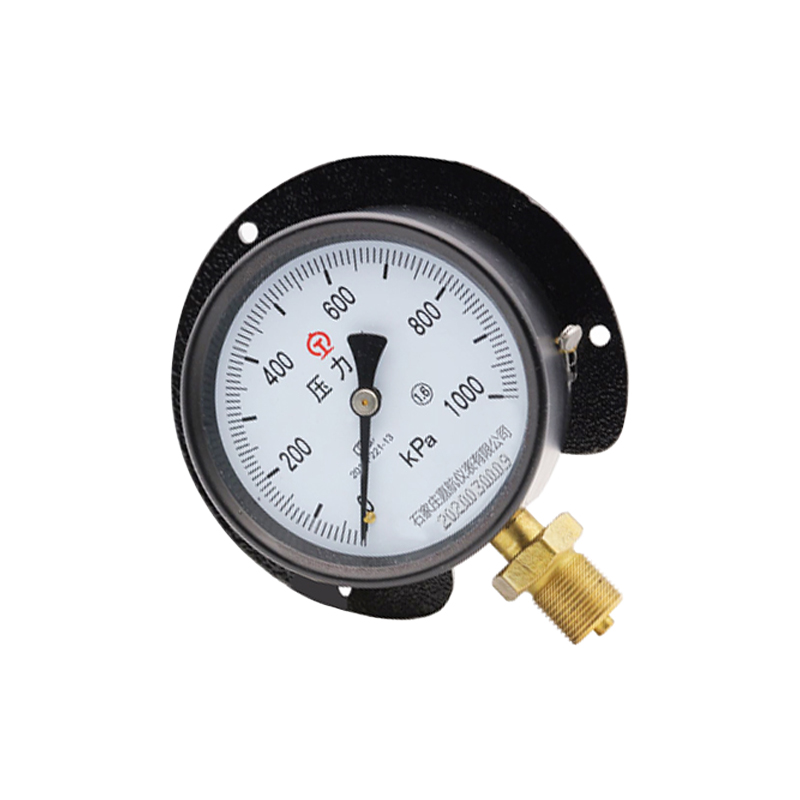
lip . 26, 2024 03:22 Back to list
Exploring the Features and Applications of Jah Budenberg Differential Pressure Gauges in Industry
Understanding the Jah Budenberg Differential Pressure Gauge
The Jah Budenberg Differential Pressure Gauge is a highly regarded instrument used in various industrial applications to measure the pressure difference between two points in a system. This type of gauge is critical for ensuring the safe and efficient operation of processes in sectors such as oil and gas, water treatment, HVAC (heating, ventilation, and air conditioning), and many others.
Design and Functionality
The Jah Budenberg differential pressure gauge is engineered to provide accurate and reliable readings even in challenging environments. The design typically incorporates a diaphragm or a bourdon tube mechanism, which responds to the pressure difference between two input points. As the pressure varies, the diaphragm flexes or the bourdon tube deforms, translating these changes into a readable gauge movement.
This gauge is equipped with dual pressure connections, allowing it to monitor the pressure differential between two fluid streams—such as upstream and downstream pressure in a pipeline. The ability to measure this differential is crucial for various applications, including filter monitoring, level measurement in tanks, and detecting blockages in piping systems.
Applications
1. Process Control In chemical and petrochemical industries, maintaining optimal pressure differentials can be essential for safety and efficiency. The Jah Budenberg differential pressure gauge helps operators make informed decisions on process adjustments.
jah budenberg differential pressure gauge

2. Filtration Monitoring One of the key applications of differential pressure gauges is in monitoring the condition of filters. As a filter becomes clogged, the pressure differential across it increases. By observing this change, operators can determine the optimal time for cleaning or replacing the filter to ensure uninterrupted operations.
3. HVAC Systems In HVAC applications, these gauges are used to monitor air pressure differences, ensuring that ventilation systems operate efficiently. A significant change in the differential pressure may indicate issues such as duct blockages, which can lead to reduced air quality and increased energy consumption.
Benefits
One of the primary advantages of the Jah Budenberg differential pressure gauge is its high accuracy across a wide range of pressure differences. Unlike other types of pressure measurements that may require recalibration or face restrictions based on the range, these gauges are typically designed for long-term stability.
Additionally, the robust construction of Jah Budenberg gauges means they can withstand harsh industrial conditions, including high temperatures and corrosive environments. This durability reduces maintenance downtime and long-term operational costs, making them a reliable choice for industries where precision is paramount.
Conclusion
The Jah Budenberg Differential Pressure Gauge is an essential tool in modern industrial processes, providing crucial data that allows for the safe and efficient management of operations. Its ability to accurately measure pressure differences not only facilitates better process control and maintenance but also enhances overall system performance. As industries continue to advance technologically, the importance of reliable and efficient measurement instruments like the Jah Budenberg differential pressure gauge cannot be overstated. The integration of this gauge into various applications underscores its significance in maintaining operational excellence and safety across many sectors.
-
High-Precision 5 Valve Manifold Differential Pressure Gauge Suppliers
NewsApr.29,2025
-
High-Precision Diaphragm Vacuum Pressure Gauges Manufacturers & Quotes
NewsApr.29,2025
-
Omega Differential Pressure Gauges High Accuracy & Durability
NewsApr.28,2025
-
Low Pressure Differential Pressure Gauges Precision Solutions & Quotes
NewsApr.28,2025
-
Digital Diaphragm Pressure Gaauge Precision Measurement & OEM Quotes
NewsApr.28,2025
-
Differential Pressure Gauge China Price High-Accuracy & Best Quotes
NewsApr.28,2025
